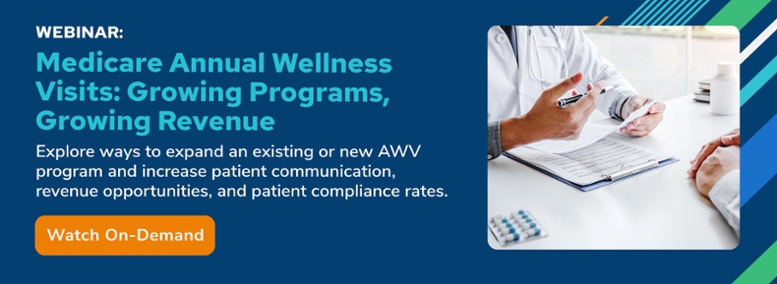As a practitioner, you understand how beneficial a cardiovascular risk assessment is for your patients. While assessing and treating your patient's cardiac risk factors is beneficial, it can eat up one of your most valuable resources: time. Finding time-saving tools that you can trust and rely on for compliance and accuracy is almost as important as performing the risk assessment itself.
To better ensure you are providing your patients with the most valuable care and information available, the American College of Cardiology (ACC) and the American Heart Association (AHA) Task Force on Practice Guidelines has defined best practice guidelines that are now wrapped up into an easy-to-use cardiovascular risk assessment tool that will save you time.
Besides being a time-saver, why is such a tool so valuable to patients and healthcare organizations? Let's dive into this question further.
Deadly Cardiovascular Disease
Cardiovascular disease is the leading cause of death in the United States, killing roughly one person every 36 seconds. How do we gain control of this devastating and often preventable chronic disease? Since cardiovascular disease is so prevalent and affects nearly everyone, it's become a major point of focus for the ACC and the AHA Task Force on Practice Guidelines as they work to refine the best practice approach in preventing disease onset and cardiac events. One way the ACC and AHA has worked to combat cardiovascular disease was through revising the outdated standardized risk assessment process so practitioners can more accurately assess individual risk and then provide specified and individualized guidelines for each patient deemed to have risk factors for cardiovascular disease.
Traditionally, evaluating a patient for cardiovascular disease risk has been performed by completing an office visit to collect vital statistics such as height, weight, and BMI; drawing labs to check cholesterol and lipid levels; and conducting a patient interview to evaluate lifestyle risk factors. While today's recommended risk assessment protocol essentially still follows the same process, the difference occurs when practitioners provide treatment guidelines to their patients and how they retrieve these guidelines.
Historically, practitioners would have to tap into their existing knowledge base or conduct time-consuming ongoing research to provide patients with current guidance for treatment. Now, individualized and accurate results can be generated instantly so that more time can be spent coaching the patient and less time figuring out the best prevention or treatment approach.
Updating an Outdated Approach for Cardiovascular Care
The ACA and AHA realized that the data used for cardiovascular risk assessment purposes was outdated and not completely representative of the current makeup of the American population, resulting in practitioners relying on information that might not be as accurate as it could and should be. Based on modifications to and adoption of the Framingham 10-year risk score approach, and the implementation of a data-driven predictive model, practitioners and their patients now have access to concise and individualized guidance. This updated information is also more efficient for practitioners because it's been packaged into easy-to-use web-based tools that generate instant results, allowing them to preserve the valuable resource of time and focus more on patient counseling.
The reasoning behind this updated, data-driven predictive model is to achieve standardized guidelines and uniformity that better represent the true makeup of the American population. By developing a predictive model based on standard individualized results, a risk score can be generated and the practitioner will have at their fingertips a guide to mitigate and hopefully decrease their patient's risk factors, preventing future cardiac events.
Take Advantage of Medicare Coverage for Preventive Cardiovascular Care
Medicare understands how expensive cardiovascular health issues can be to treat and that prevention is the least costly approach to providing care. To encourage beneficiary participation, Medicare covers cardiovascular risk assessments and screenings at no out-of-pocket cost to the patient. Medicare beneficiaries are eligible for two types of cardiovascular-related benefits: cardiovascular disease behavioral therapy, also known as a cardiovascular risk reduction visit, and cardiovascular disease screening. There are a few notable differences between these two types of visits, especially relating to the actual services provided and their allowed frequency. To ensure proper reimbursement and keep your patients from being billed for services they thought were covered, practitioners and their billing team must be mindful of which service they are billing for or ordering and ensure the patient is eligible before the service is rendered.
Cardiovascular disease behavioral therapy/risk reduction visit
All Medicare beneficiaries are eligible to receive this service once annually. According to Medicare guidelines, this visit should be comprised of a risk assessment that includes screening for high blood pressure and providing the patient with counseling to promote a healthy diet and lifestyle. This visit can be completed and billed as a standalone service or it can be combined and billed in conjunction with the patient's Medicare annual wellness visit.
Cardiovascular disease screening
This Medicare service references the blood test that a practitioner orders to screen the patient for cholesterol and other blood fat (lipid) levels. Medicare provides coverage for this screening only once every five years. Practitioners frequently want to check their patient's progress more often than this, so patients may incur a lab fee for cardiovascular disease screening tests ordered outside of the five-year window.
Save Time and Provide Great Cardiovascular Preventive Care
As a practitioner, you want to provide your patients with the best care possible, but time is always going to be a concern. Through the diligent work of the ACC and AHA, practitioners now have a way to provide their patients with the most up-to-date information available and save valuable time. Your patient's individual cardiovascular risk factors can quickly be assessed, allowing you to provide them with accurate guidance.
Realizing the benefit and value of cardiovascular risk assessment tools from the ACC and AHA, we've created our own tool based on their guidelines. Here at Prevounce, we want to provide our partners with cutting-edge technology and tools inspired by the most reliable resources. Curious? Schedule a demo of the Prevounce platform to see our cardiovascular risk assessment tool and the other features that make our solution the platform of choice for a growing number of cardiologists. For additional preventative service tools, check out the Prevounce resource library.


